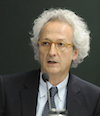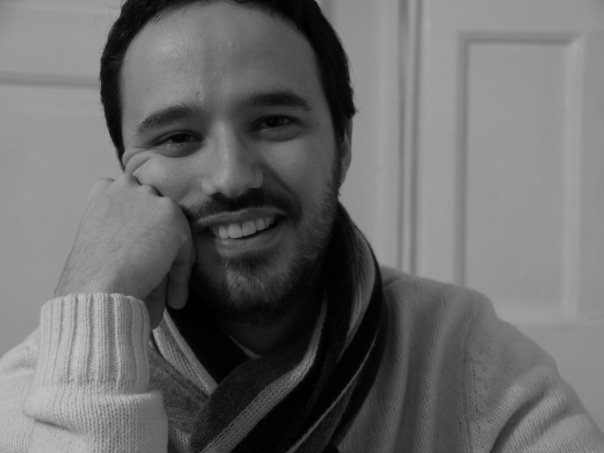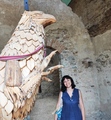Studying at the University of Verona
Here you can find information on the organisational aspects of the Programme, lecture timetables, learning activities and useful contact details for your time at the University, from enrolment to graduation.
Academic calendar
The academic calendar shows the deadlines and scheduled events that are relevant to students, teaching and technical-administrative staff of the University. Public holidays and University closures are also indicated. The academic year normally begins on 1 October each year and ends on 30 September of the following year.
Course calendar
The Academic Calendar sets out the degree programme lecture and exam timetables, as well as the relevant university closure dates..
| Period | From | To |
|---|---|---|
| First half of Semester 1 | Sep 25, 2017 | Nov 11, 2017 |
| Second half of Semester 1 | Nov 13, 2017 | Jan 20, 2018 |
| First half of Semester 2 | Feb 26, 2018 | Apr 21, 2018 |
| Second half of Semester 2 | Apr 23, 2018 | Jun 9, 2018 |
| Session | From | To |
|---|---|---|
| Sessione d'esame invernale | Jan 22, 2018 | Feb 24, 2018 |
| Sessione d'esame estiva | Jun 11, 2018 | Jul 28, 2018 |
| Sessione d'esame autunnale | Aug 27, 2018 | Sep 22, 2018 |
| Session | From | To |
|---|---|---|
| Sessione estiva | Jul 16, 2018 | Jul 21, 2018 |
| Sessione autunnale | Nov 12, 2018 | Nov 17, 2018 |
| Sessione invernale | Apr 1, 2019 | Apr 6, 2019 |
| Period | From | To |
|---|---|---|
| All Saints Day | Nov 1, 2017 | Nov 1, 2017 |
| Immaculate Conception | Dec 8, 2017 | Dec 8, 2017 |
| Christmas break | Dec 22, 2017 | Jan 7, 2018 |
| Easter break | Mar 30, 2018 | Apr 3, 2018 |
| Liberation Day | Apr 25, 2018 | Apr 25, 2018 |
| Labour Day | May 1, 2018 | May 1, 2018 |
| Patron Saint Day | May 21, 2018 | May 21, 2018 |
| Republic Day | Jun 2, 2018 | Jun 2, 2018 |
| Summer break | Aug 13, 2018 | Aug 18, 2018 |
Exam calendar
Exam dates and rounds are managed by the relevant Culture and Civilisation Teaching and Student Services Unit.
To view all the exam sessions available, please use the Exam dashboard on ESSE3.
If you forgot your login details or have problems logging in, please contact the relevant IT HelpDesk, or check the login details recovery web page.
Should you have any doubts or questions, please check the Enrollment FAQs
Academic staff
 augusto.barbi@univr.it
augusto.barbi@univr.it

Bassetti Massimiliano
 massimiliano.bassetti@univr.it
massimiliano.bassetti@univr.it
 045802 8376
045802 8376
 evita.calabrese@univr.it
evita.calabrese@univr.it
Carnero Roberto
 roberto.carnero@univr.it
roberto.carnero@univr.it
Hatzikiriakos Alexandros Maria
 alexandrosmaria.hatzikiriakos@univr.it
alexandrosmaria.hatzikiriakos@univr.it
 francesco.lupi@univr.it
francesco.lupi@univr.it

Mastrocinque Attilio
 attilio.mastrocinque@univr.it
attilio.mastrocinque@univr.it
 +39 045802 8386
+39 045802 8386
 linda.napolitano@univr.it
linda.napolitano@univr.it

Pasini Roberto
 pasini.roberto@univr.it
pasini.roberto@univr.it
 +39 045802 8121
+39 045802 8121
 dino.piovan@univr.it
dino.piovan@univr.it
 alberto.scandola@univr.it
alberto.scandola@univr.it
Tani Stefano
 stefano.tani@univr.it
stefano.tani@univr.it
 +39 045802 8110
+39 045802 8110
 sonia.trovato@univr.it
sonia.trovato@univr.it
 gianmaria.varanini@univr.it
gianmaria.varanini@univr.it
Study Plan
The Study Plan includes all modules, teaching and learning activities that each student will need to undertake during their time at the University.
Please select your Study Plan based on your enrollment year.
1° Year
| Modules | Credits | TAF | SSD |
|---|
To be chosen between2° Year activated in the A.Y. 2018/2019
| Modules | Credits | TAF | SSD |
|---|
Latin literature (i)
To be chosen between2 courses to be chosen between2 courses to be chosen between3° Year activated in the A.Y. 2019/2020
| Modules | Credits | TAF | SSD |
|---|
To be chosen between3 courses to be chosen between| Modules | Credits | TAF | SSD |
|---|
To be chosen between| Modules | Credits | TAF | SSD |
|---|
Latin literature (i)
To be chosen between2 courses to be chosen between2 courses to be chosen between| Modules | Credits | TAF | SSD |
|---|
To be chosen between3 courses to be chosen between| Modules | Credits | TAF | SSD |
|---|
Legend | Type of training activity (TTA)
TAF (Type of Educational Activity) All courses and activities are classified into different types of educational activities, indicated by a letter.
Latin literature (p) (2018/2019)
Teaching code
4S02184
Teacher
Coordinator
Credits
6
Also offered in courses:
- Latin literature (i+p) - II MODULO PARTE (II) of the course Bachelor's degree in Philosophy
- Latin literature - MODULO 2 of the course Bachelor's degree in Philosophy
Language
Italian
Scientific Disciplinary Sector (SSD)
L-FIL-LET/04 - LATIN LANGUAGE AND LITERATURE
Period
Sem. 2B dal Apr 8, 2019 al Jun 1, 2019.
Learning outcomes
Teaching aims to give a detailed knowledge of Latin literature in its main features, both with specific reference to its historical development, literary genres and rules, and by the knowledge of some selected works.
Prerequisites: Basic knowledge of Latin language.
Learning outcomes: at the end of teaching students are able:
- to show an advanced knowledge of Latin language (phonetics, morphology, syntax), prosody and textual criticism;
- to improve autonomous skills in comprehension, translation and interpretation of the proposed texts;
- to enhance autonomous skills for a philological, linguistic, and historical and literary analysis of the proposed texts;
- to develop a metrical analysis of the proposed texts;
- to enhance skills for an interpretation of the proposed texts with reference to their historical and literary background;
- to present the teaching topics in an in-depth way, with a clear and well organised exposition;
- to connect the teaching topics to the main framework of the history of Latin literature and to the specific features of literary genres;
- to develop an autonomous reflection and analysis of Latin proposed texts;
- to have an appropriate methodology for the study of literary Latin texts.
Program
Prerequisites: basic knowledge of the Latin language. Satisfactory knowledge of Latin morphology and of Latin grammar and comprehension of basic lexicon will be considered as prerequisites for the course and will be tested during the final exam. It is strongly recommended to attend the Latin tutorials and/or to take the related exam (it provides 3 credits of sector f) before attending this course.
Content: reading, translation and linguistic, historical, prosodic and literary commentary of Vergil’s Aeneid Book II.
Reference works:
Virgilio, Eneide 2, Introduzione, traduzione e commento a cura di S. Casali, Pisa, Edizioni della Normale, 2017;
N. Holzberg, Virgilio, Il Mulino, 2008;
A. Traina-G. Bernardi Perini, Propedeutica al latino universitario, Bologna, Pàtron, 2007, chapt. V-IX.
Further teaching materials will be provided during the course.
Didactic methods: lectures.
| Author | Title | Publishing house | Year | ISBN | Notes |
|---|---|---|---|---|---|
| A. Traina, G. Bernardi Perini | Propedeutica al latino universitario (Edizione 6) | Pàtron | 2007 | 88-555-2454-2 | |
| N. Holzberg | Virgilio | Il Mulino | 2008 | 978-88-15-12039-7 | |
| S. Casali (a cura di) | Virgilio, Eneide 2. Introduzione, traduzione e commento | Edizioni della Normale | 2017 | 978-88-76-42572-1 |
Examination Methods
The final exam will be oral. Students will be requested to read (with eventual prosodical reading) and translate orally, together with an exegetical and literary commentary, one or more excerpts from the Latin texts enlisted in the course catalogue. The oral exam aims to test deep knowledge of the Latin language in its various components (morphology, syntax, and prosody), together with the main issues of textual criticim and the most important study tools for classic Latin language and civilization.
Type D and Type F activities
| years | Modules | TAF | Teacher | |
|---|---|---|---|---|
| 1° | Aesthetics (p) | D |
Markus Georg Ophaelders
(Coordinator)
|
|
| 1° 2° 3° | The origins of Christianity | F |
Augusto Barbi
(Coordinator)
|
|
| years | Modules | TAF | Teacher |
|---|---|---|---|
| 1° 2° 3° | Archaeology and History of Greek and Roman Art (i) | D |
Giuliana Maria Facchini
|
| 1° 2° 3° | Archeology laboratory of instrumentum domesticum | F |
Giuliana Maria Facchini
(Coordinator)
|
| 1° 2° 3° | Laboratory of ancient greek | F |
Dino Piovan
(Coordinator)
|
| 1° 2° 3° | History of Greek and Roman theatre (i) | D |
Gherardo Ugolini
(Coordinator)
|
| years | Modules | TAF | Teacher | |
|---|---|---|---|---|
| 1° | Aesthetics (p) | D |
Markus Georg Ophaelders
(Coordinator)
|
|
| 3° | Roman History (p) | D |
Attilio Mastrocinque
|
|
| years | Modules | TAF | Teacher | |
|---|---|---|---|---|
| 2° 3° | Greek Literature (p) | D |
Guido Avezzu'
|
|
| 2° 3° | History of the Ancient Near East (i) | D |
Simonetta Ponchia
|
|
| 1° 2° 3° | Archaeology and History of Greek and Roman Art (p) | D |
Giuliana Maria Facchini
|
|
| 1° 2° 3° | Ephigraphy of production and distribution | F |
Alfredo Buonopane
(Coordinator)
|
|
| 1° 2° 3° | Europa: eredità-identità-prospettive | F |
Gian Paolo Romagnani
(Coordinator)
|
|
| 1° 2° 3° | Archeology laboratory of instrumentum domesticum | F |
Giuliana Maria Facchini
(Coordinator)
|
|
| 1° 2° 3° | Laboratory of theatrical and musical criticism | F |
Simona Brunetti
(Coordinator)
|
|
| 1° 2° 3° | Laboratory of ancient greek | F |
Dino Piovan
(Coordinator)
|
|
| 1° 2° 3° | CRES Lectures | F |
Corrado Viola
(Coordinator)
|
|
| 1° 2° 3° | The History of Contemporary Art (p) | D |
Roberto Pasini
|
|
Career prospects
Module/Programme news
News for students
There you will find information, resources and services useful during your time at the University (Student’s exam record, your study plan on ESSE3, Distance Learning courses, university email account, office forms, administrative procedures, etc.). You can log into MyUnivr with your GIA login details: only in this way will you be able to receive notification of all the notices from your teachers and your secretariat via email and soon also via the Univr app.
Graduation
List of theses and work experience proposals
| theses proposals | Research area |
|---|---|
| tesi di Glottologia, Storia comparata, Linguistica storica | ENGLISH LANGUAGE - Grammar and Syntax – Grammatik und Syntax |
| tesi di Glottologia, Storia comparata, Linguistica storica | GERMANIC LANGUAGE - Dialectology - Dialektologie |
| tesi di Glottologia, Storia comparata, Linguistica storica | HUMANITIES & SOCIAL STUDIES - HUMANITIES & SOCIAL STUDIES |
| tesi di Glottologia, Storia comparata, Linguistica storica | Indo-European languages & literatures - Indo-European languages & literatures |
| tesi di Glottologia, Storia comparata, Linguistica storica | LINGUISTICS - LINGUISTICS |
| Stage | Research area |
|---|---|
| Lavorare in archivio | Various topics |
| L'iter del libro in biblioteca | Various topics |
Gestione carriere
Linguistic training CLA
Student mentoring
Requisiti classi di abilitazione insegnamento
Requisiti necessari per accedere alle classi di abilitazione per l'insegnamento.
vedi allegato pdf
Inoltre, per informazioni sui 24 CFU nelle discipline antropo-psico-pedagogiche e nelle metodologie e tecnologie didattiche, si veda -> LINK
Documents
| Title | Info File |
|---|---|
|
|
pdf, it, 307 KB, 30/11/21 |






















































